Leather production
The process of leather production is lengthy and involves several steps which are carried out before the actual tanning process. The most important steps which lead to the raw animal hide being converted to leather are listed below. According to a furniture leather tanner, furniture leather requires to undergo anywhere about 35 to 55 steps depending on the type of furniture leather. Each step is very important and the quality must be checked all the time to ensure the best quality leather is produced.
Contents
- 1 Preservation by drying, salting or freezing
- 2 Beamhouse Operations
- 3 Soaking
- 4 Liming
- 5 Fleshing
- 6 Splitting
- 7 Pickling
- 8 Tanning
- 9 Neutralising
- 10 Withering
- 11 Sorting
- 12 Shaving
- 13 Dyeing (through colouring) and fatliquoring
- 14 Drying
- 15 Stollen
- 16 Oberflächenfärbung
- 17 Kontrolle
- 18 Film über die Lederherstellung
- 19 Additional information
Preservation by drying, salting or freezing
The rawhides have to be conserved between slaughter and tannery, when the storage time takes to long. A quality control and the sorting by weight is carried out before arriving at the tannery.
Additional information to this processing step
Beamhouse Operations
The process of preparing the hides for tanning are referred to as beamhouse operations. This involves all stages mentioned below between preservation and tanning.
All skins and hides which are completed as finished products without undergoing any tanning, retain the characteristics of untanned skin including parchment. One common by-product derived from rawhide is dog chews.
Soaking
The hides are soaked in clean water to get rid of any dirt and mainly to remove the salt applied in the earlier stage. Curing (salt conservation treatment) also removes water from the hides and soaking them, causes the hides to swell and bring them back to their original softness. The hides can be treated for several days depending on the amount of salt and the dryness of the skins. Salted bovine hides need several hours and dryed hiedes several days.
Additional information to this processing step
Liming
One of the most important steps of the beamhouse operations is ‘liming’. The hides are soaked in liming drums which contain a solution made of lime and sulphur compounds. The main purpose of this process is to separate the hair from the hides. The net result is hides with no hair which are very greasy mainly because they still have a high fat content.
After liming the hide has no hair any more.
Additional information to this processing step
Fleshing
By this stage, the hides are still in a soaked yet softened condition. Traditionally, using a sharp but curved blade any excess flesh were removed by placing them on a beam. However, today this process is done using machines. Any debris that is left over is referred to as ‘glue stock’.
Additional information to this processing step
Splitting
To get an uniform thickness, the hide/skin is cut into two or more horizontal layers. The top, or grain side layer will produce a fine, smooth grain leather. The bottom is used for suede or split leather for other uses.
Additional information to this processing step
Pickling
The Pickling process makes the fibres of the hides and skins more receptive to tanning.
Additional information to this processing step
Tanning
In the tanning process tannins are absorbed by the hides and skins and turn them into leather. By tanning the skin is irreversibly chemically preserved and converted to the material leather.
Additional information to this processing step
Neutralising
Leftover acids from the tanning are neutralised.
Additional information to this processing step
Withering
When withering the wet skins, residual water is pressed out by forcing it through metal rolls. There are various methods to dry the leather in the intermediate steps of the leather production in the tannery.
Dewatering the wet leather by out squeezing the water.
Additional information to this processing step
Sorting
The leather then undergoes a quality check and is sorted according the quality. Hides which do not have any blemishes or marks are best quality and could be processed to aniline leather. The ones which have marks may be processed into corrected grain.
Aniline leather must be flawless. Even the smallest damages in the main surface are sorted out.
Shaving
In the shaving process the leather is thinned and equalized using a leather shaving machine which cuts leather fibres off from the flesh side.
Additional information to this processing step
Dyeing (through colouring) and fatliquoring
Depending on the type of leather, the leathers are coloured using aniline dyes (drum dyeing). The softness of the leather is controlled by fatliquoring (regreasing).
Drying
For the drying of leather in the individual steps in the tannery there are many different methods. Typical is the vacuum drying and suspended drying in ovens.
Vacuum drying - Suspended drying - Stretcher and drying frame in ovens
Additional information to this processing step
Stollen
Nach dem Trocknen wird das Leder durch Walkmaschinen weiter aufgeweicht.
Walken im Walkfass - Stollen
Additional information to this processing step
Oberflächenfärbung
Das Leder wird nun ggf. oberflächenbehandelt, also grundiert, weiter gefärbt, appretiert, gepresst und gebügelt. So kann dem Leder, je nach Wunsch, eine glänzende oder matte, ein- oder mehrfarbige, glatte oder genarbte Optik verliehen werden.
Additional information to this processing step
Kontrolle
Abschließende erneute Überprüfung der Produktqualität und Größenmessung der Häute.
Film über die Lederherstellung
Die Lederherstellung in einer modernen Gerberei.
Die Hirngerbung.
Die Lederherstellung mit Gerbstoffen der Eiche.
Die Sämischgerbung.
Additional information
| Process steps in the leather production |
|---|
| storage - soaking - liming - fleshing - splitting - pickling - tanning - neutralising - withering - sorting - shaving - yeing (through colouring) and fatliquoring - drying - finish - softening - final check |
| Tanning methods |
|---|
| Chrome tanning - Vegetable-tanned leather - Tawing with alum - Buckskin - Synthetic tanning |







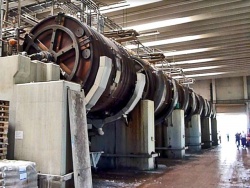
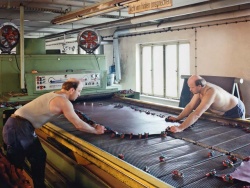
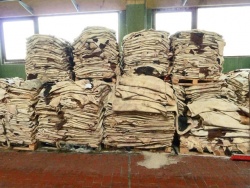
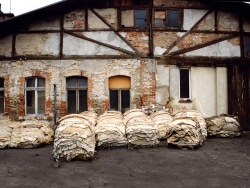
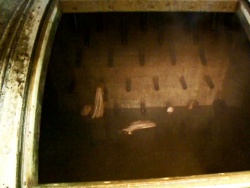
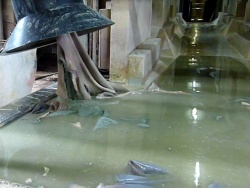
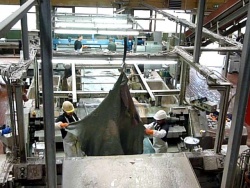
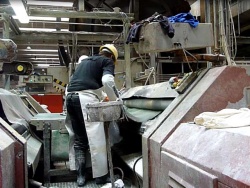
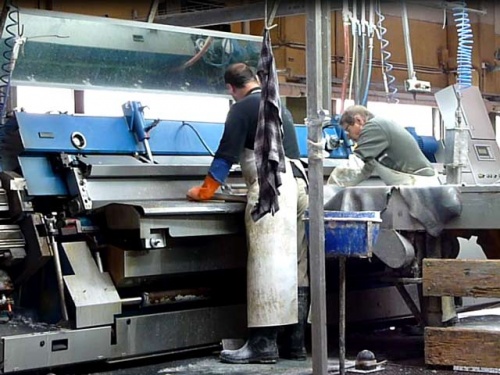
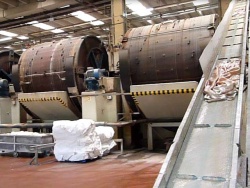
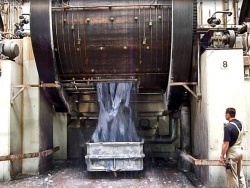
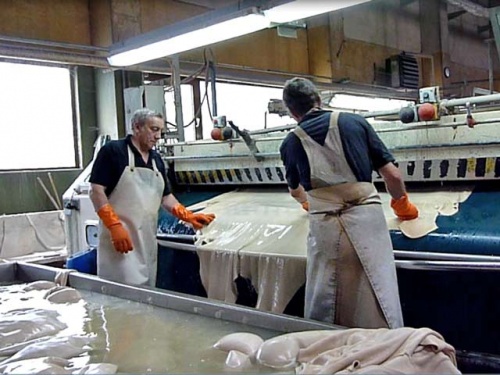
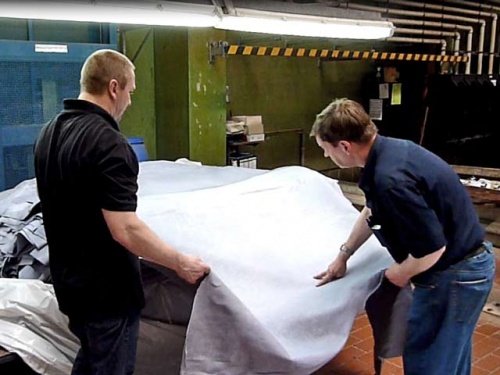
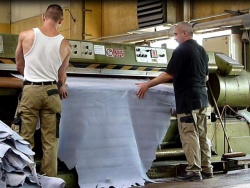
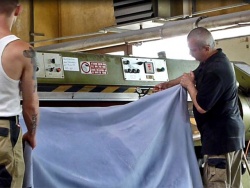
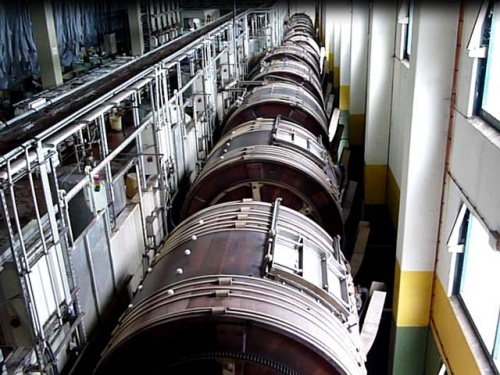
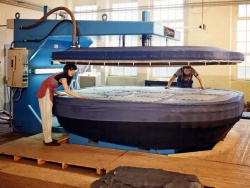
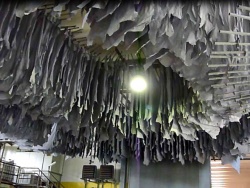
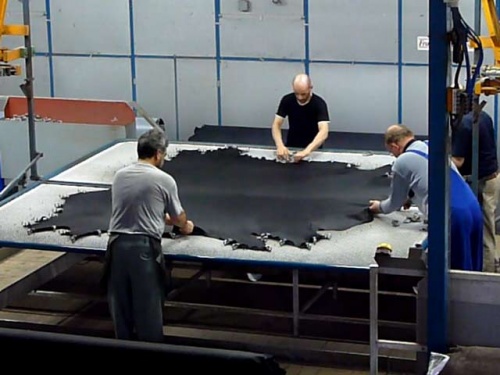
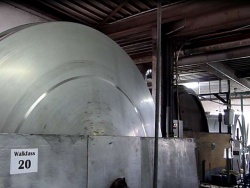
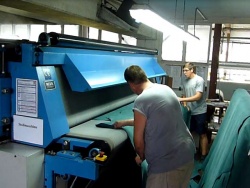
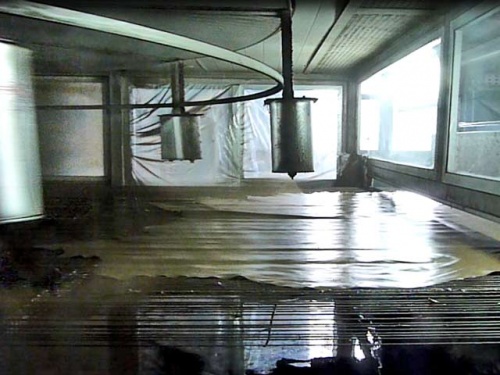
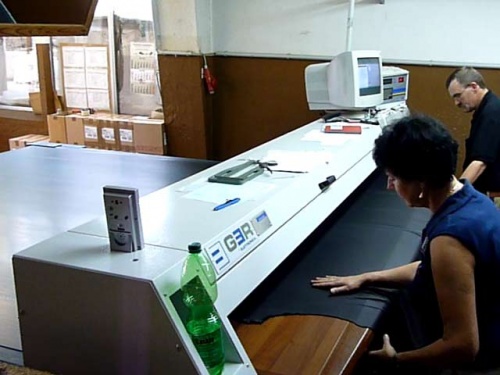

 a kotori web solution
a kotori web solution